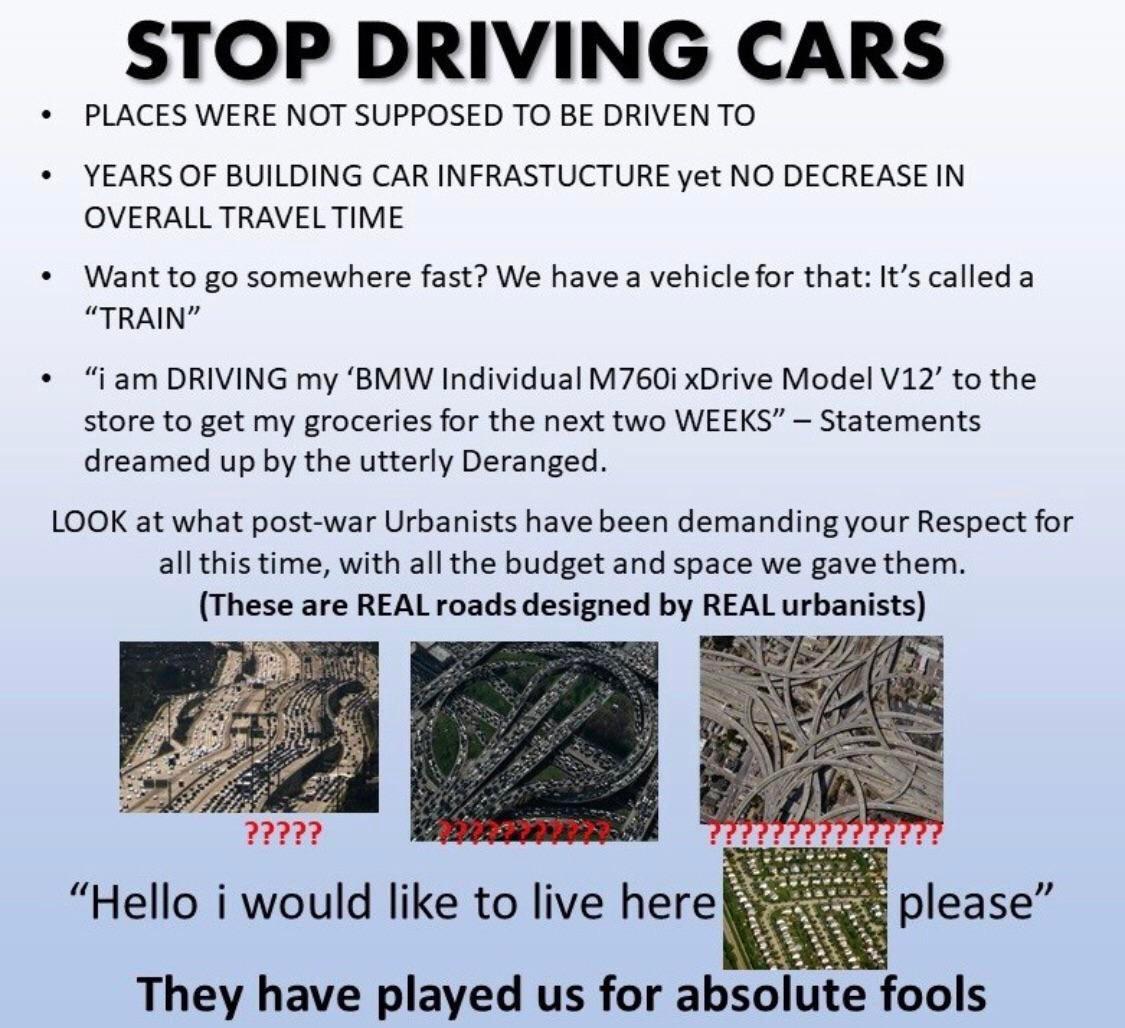this post was submitted on 12 Oct 2023
1126 points (86.7% liked)
Memes
45746 readers
1718 users here now
Rules:
- Be civil and nice.
- Try not to excessively repost, as a rule of thumb, wait at least 2 months to do it if you have to.
founded 5 years ago
MODERATORS
you are viewing a single comment's thread
view the rest of the comments
view the rest of the comments

That's changing the subject again. I was saying the commentor was effectively advocating for doing nothing because current infrastructure is poor.
It's worth noting that car centric infrastructure is extremely expensive as well and requires constant upkeep. Bike infrastructure can often be made incrementally by simplying just requiring new/updated road to have bike lanes for instance
That is part of how the Netherlands got really good bike infrastructure and how a number of cities are getting better at it
EDIT: I should also mention that the car centric deisgn of many suburbs in particular is a large contributer to why they don't have much money to begin with. The upkeep costs start to pile up and make the regions net negative for the local government's income
The more a place is car centric, the higher these costs for upkeep will be (more traffic causing more damage in more places)
Well, try that in a city environment. It might work with some of the main roads, but we are not in Cities:Skylines here where houses move or are automatically replaced when you install a wider road. I may have to add that here is not the US where many roads are so wide that you need a car to get to the other side ;-)
More than 80% (give or take) of the roads in cities here are so narrow that two (small) car lanes plus the pedestrian sidewalks are basically "it". The road in front of my house is, IIRC, between 5.4 and 5.8m wide - without having a sidewalk. Try adding a bike path here. And if you turn basically each and every side road into one-way roads in order to add bike paths might lead to serious acceptance problems.
Well, while I won't contradict your notion that more traffic causes more damage, I'd ask you to keep in mind that one truck does as much damage to a road as 40000 cars (yes, it is that much, the damage factor is x^4^, with x being the relative mass, and the calculation base being a normal European car, not a six ton American pickup). So, as long as you want to have your supermarket stocked and your amazon order delivered, the damage created by private cars is simply irrelevant.
For the first part, yes that will vary place to place. That's why I said "often", but it's a viable method in quite a large number of locations. Especially in those which are currently some of the worst places for walkabilty/biking/public transit at the moment. Places with narrow streets are generally speaking more walkable to begin with. There are still other ways to make improvements anyhow
For the second, I am also talking about the quantity of roads (the more places part). More car centric places are going to have more roads to maintain in general.
But it's still worth mentioning that car centric design can still can lead to trucks being used in places where there are viable transportation methods like trains (this applies more so for longer distances than just delivery to houses but a number of cities do have highways that run through them).